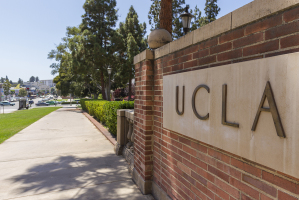Chimera Monkeys Born: Animals 'Enormous' Progress for Stem Cell Research
Embryos from six different rhesus monkeys have been combined to create the world’s first chimeric monkeys, which were born last week at the Oregon National Primate Research Centre.
The monkeys, a singleton and twins, have tissues and organs made up of cells from the six contributing embryos, and The Guardian reported that they were born healthy, without any birth defects.
The monkeys are being raised by a foster mother since they were rejected by their birth parent – most likely because of the artificial way in which they were produced, Fox News shared.
Previously, chimeric work had only been done on mice. It is said to be an important tool in scientific research because it helps explain the process of embryonic development and how individual genes work. Chimeric experiments are also used to test the likelihood of embryonic stem cells in laboratories turning into working tissues when injected into the body. In a successful procedure, the stem cells will have been incorporated into the animal's tissues and organs and the embryo will grow into a chimeric animal, such as the newborn monkeys.
Shoukhrat Mitalipov, the lead researcher, described the possibilities for science as “enormous.” He continued, "The cells never fuse, but they stay together and work together to form tissues and organs." The experiment was described in detail in the journal Cell.
The rhesus monkeys are called Chimero, Roku and Hex (the twins.) The three monkeys are males, but Roku has both male and female cells, blood test analysis revealed.
One of the problems scientists ran into was that the chimeric animals could be created only when very young embryos were merged together. This could pose a problem in using embryonic stem cells to grow new tissues in humans, since lines of embryonic stem cells produced in labs lose the ability to grow into any tissue or organ.
"If we want to move stem cell therapies from the lab to clinics and from the mouse to humans, we need to understand what these primate cells can and can't do. We need to study them in humans, including human embryos," Mitalipov stated.




























